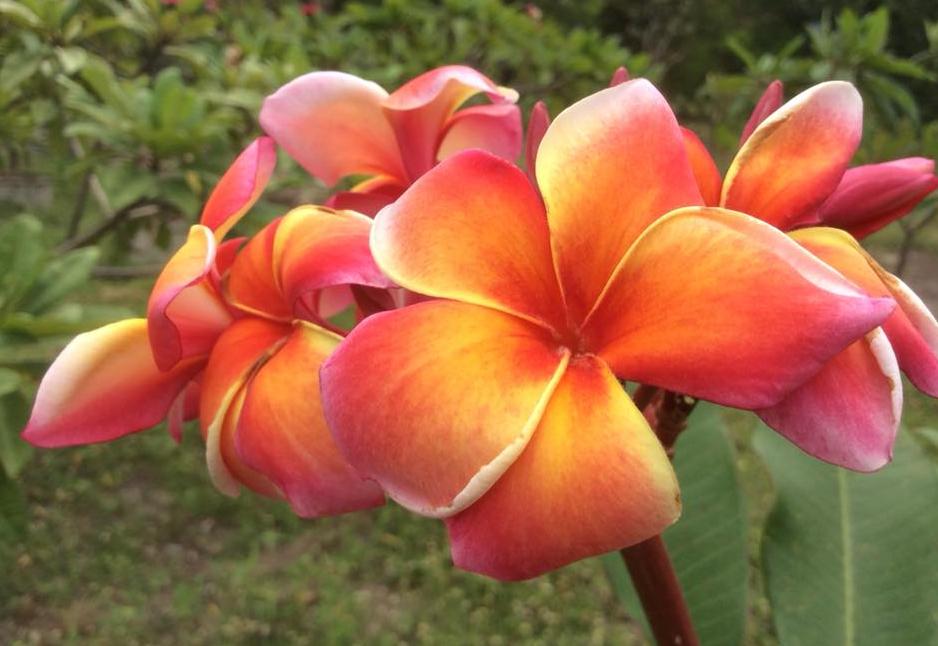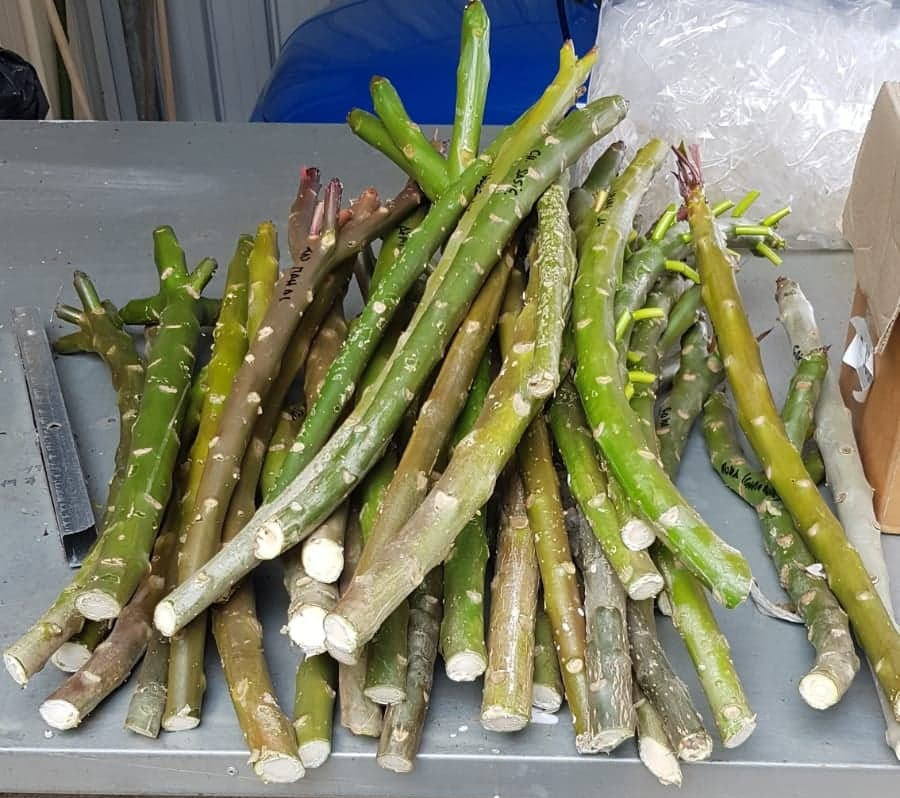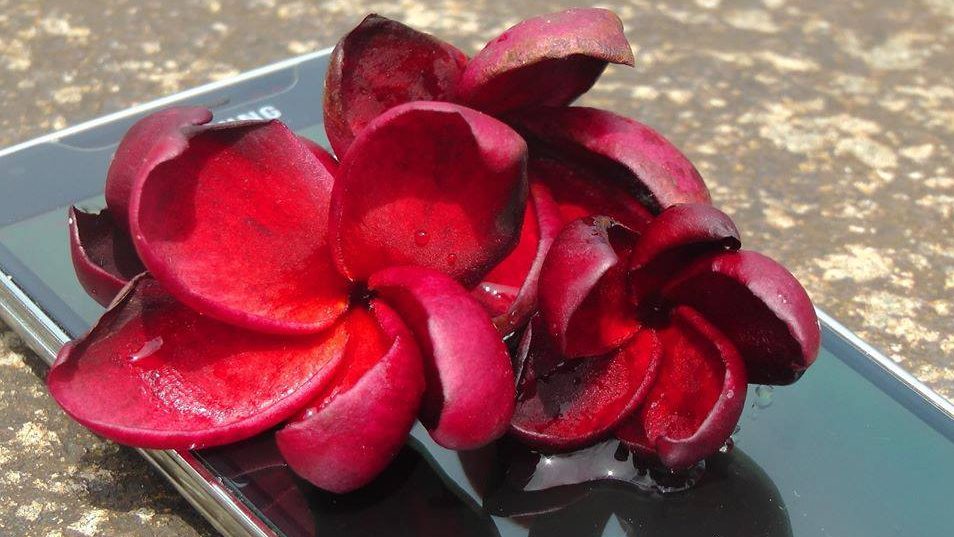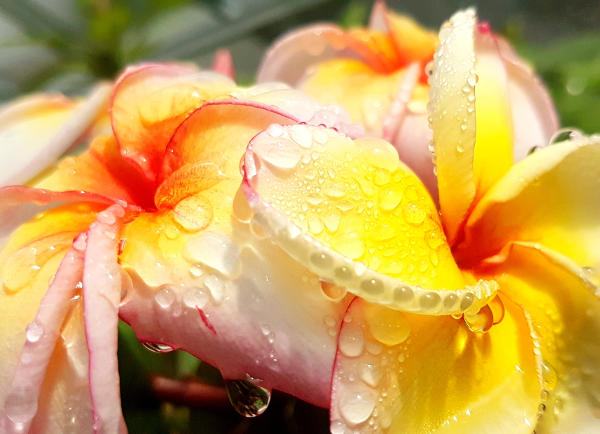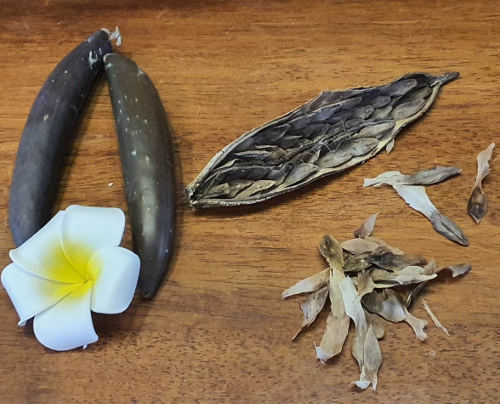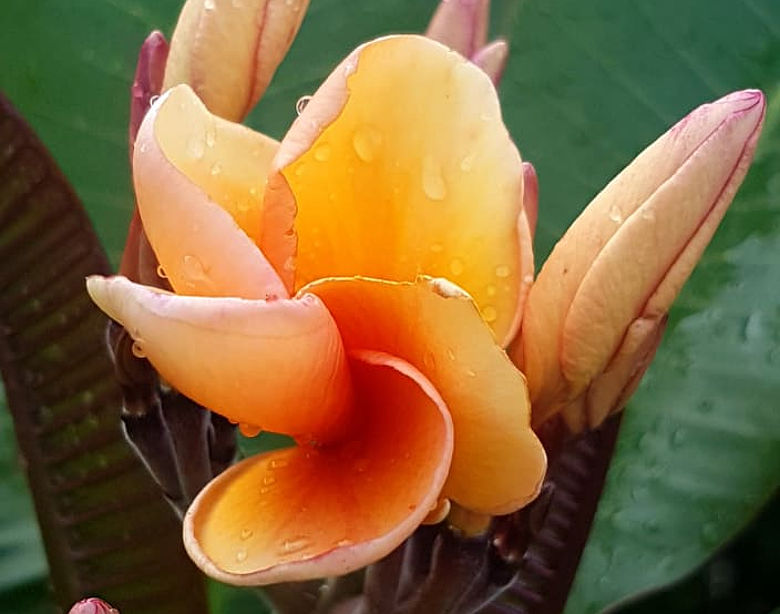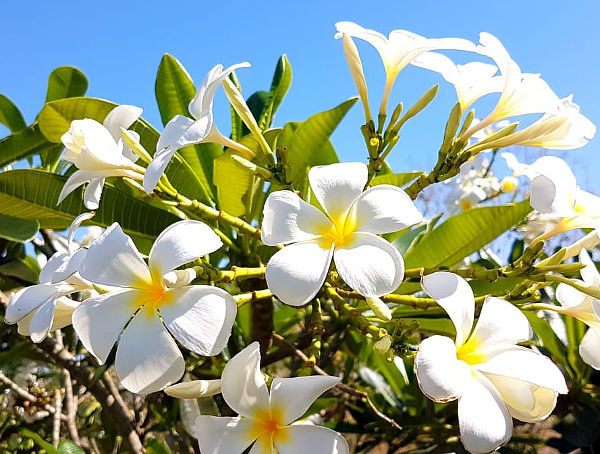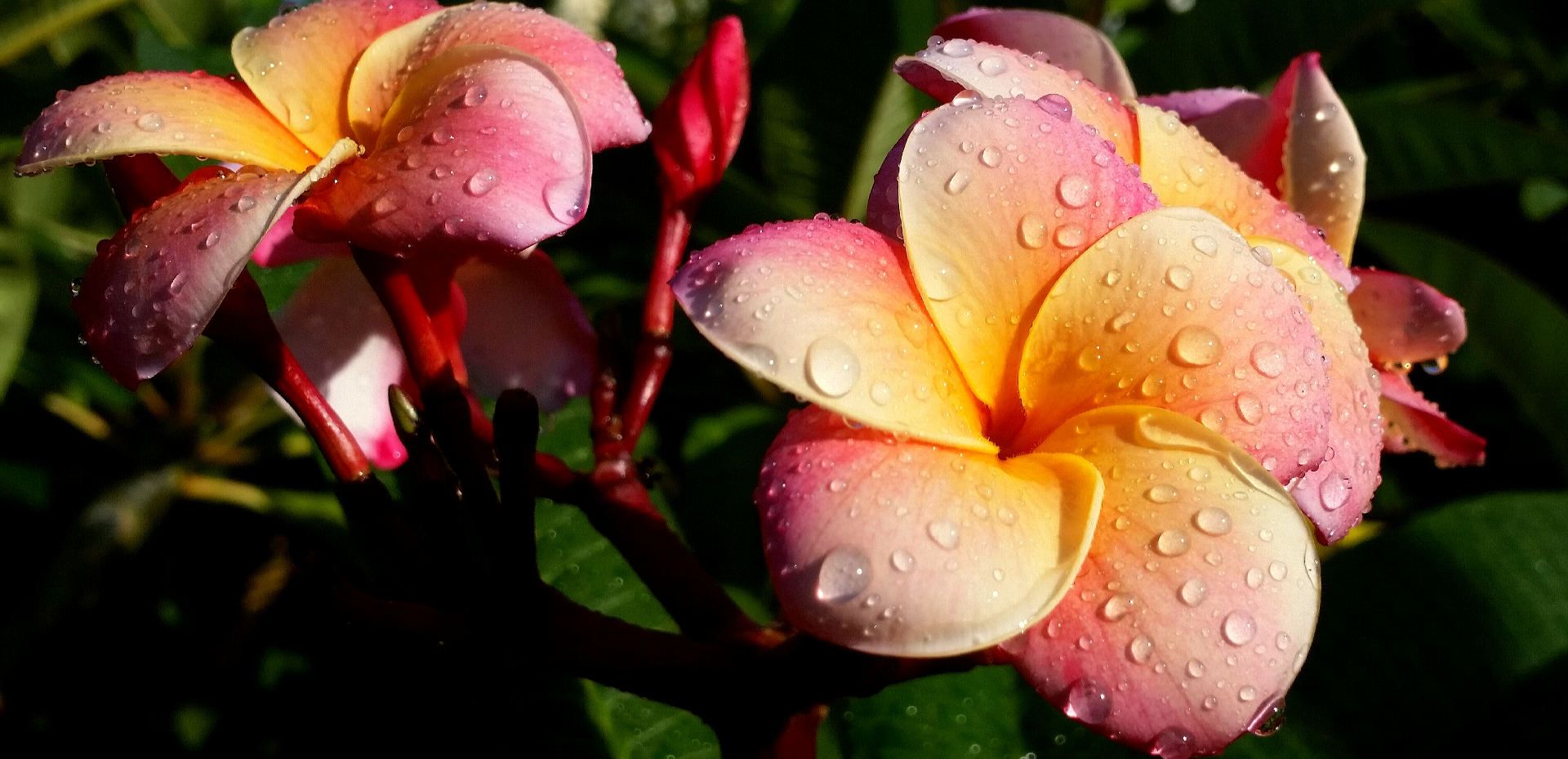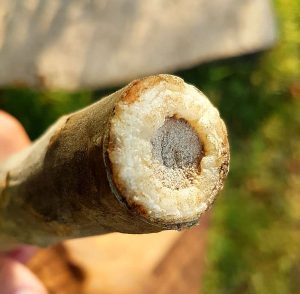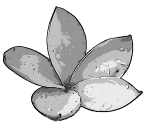
How bewurzele I a Frangipani cutting?
Frangipani cuttings (also more commonly known as cuttings) are 30 - 70cm long plant sections that do not have roots. They are cut from the mother tree to get new plants, usually smaller ones. These cuttings can be rooted using various methods. Of course, there is always the risk that a cutting will not develop roots or will even rot. None of the methods presented and described here offers a guarantee of successful rooting!When you buy a frangipani cutting, you are taking on a bit of a challenge! Rooting cuttings is always a permanent topic in all forums and groups. New tips and tricks are constantly being published, but there is no such thing as a 100% working method, because we are dealing with living plants here. Also, it is always very important during which growth period the cutting was cut from the mother plant and how it was stored until it arrives at the Plumeria lover.
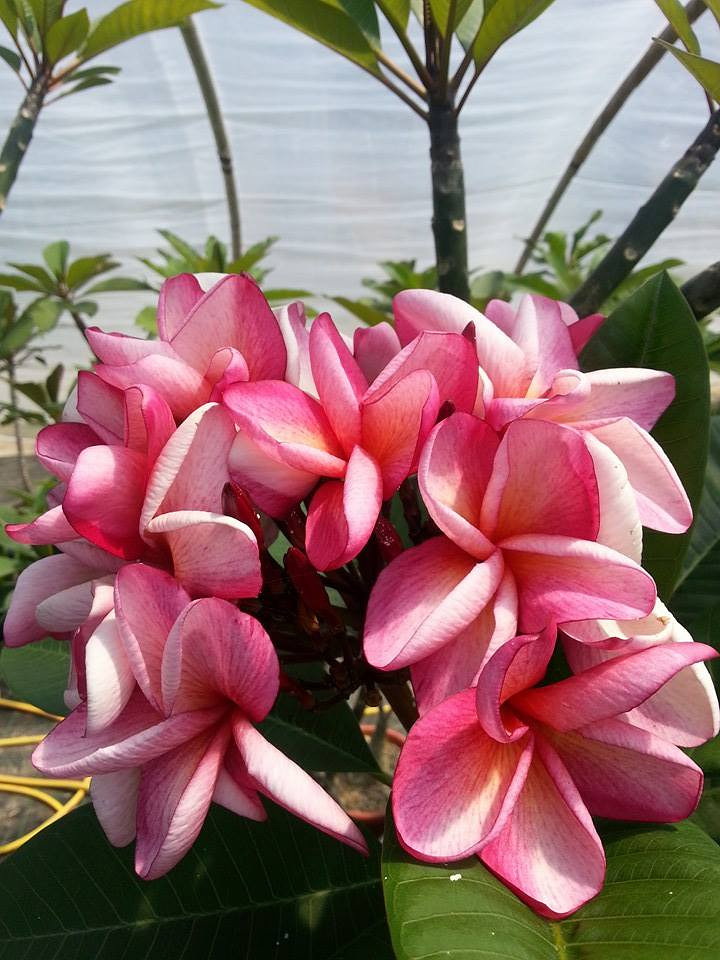
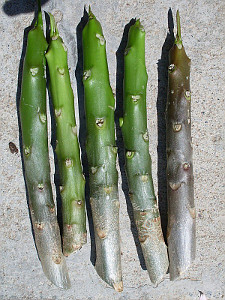 Treatment of the fresh Plumeria cutting
Treatment of the fresh Plumeria cutting
After you have cut the cutting according to the instructions or you have received your purchased frangipani cutting by post, you should let it dry for a few days in a warm place.(IMPORTANT: Always dry plumeria cuttings upright and not lying down).
From the Callus to the Roots
When the cutting has lignified and formed a callus, it is ready for rooting. Then use one of the methods listed here or one of the many others described on the net.
After the soil has dried, re-humidify. If you can guarantee a permanent temperature of > 25°C and a permanent humidity of >= 90%, hardly anything can go wrong.
Many roads lead to Rome.
There are several plumeria rooting methods(one better than the other, of course) circulating on the net. Everyone swears by the one with which they have had the best success. If you have a greenhouse, you should simply place the cuttings in a bucket filled about 40 - 50cm with perlite and let nature take its course. Spray the perlite lightly with water 1 to 2 times a week so that the cutting gets the ambient moisture it needs. After 2-3 weeks (if the humidity is right) the first roots should form from the callus.
Please NEVER pull the cuttings out of the perlite but please dig them up because otherwise you could damage the young roots!
Actually, the secret is only that:
- a permanent heat of > 25°C is present
- a humidity of >= 90% is present
- the cuttings are upright
- the environment (especially the soil or mixture) is germ-free
Of course, you can influence all factors accordingly. For example, there is the method "rooting in bird sand". This is therefore preferable to normal sand because the bird sand has a disinfecting effect and therefore fungus or rot can hardly occur. Perlite is similarly suitable.
(*) One should clean the vessel thoroughly beforehand.
(*) Heat can come through the normal heating, conservatory or a heating mat.
(*) Humidity can be ensured by misting, spraying or steaming.
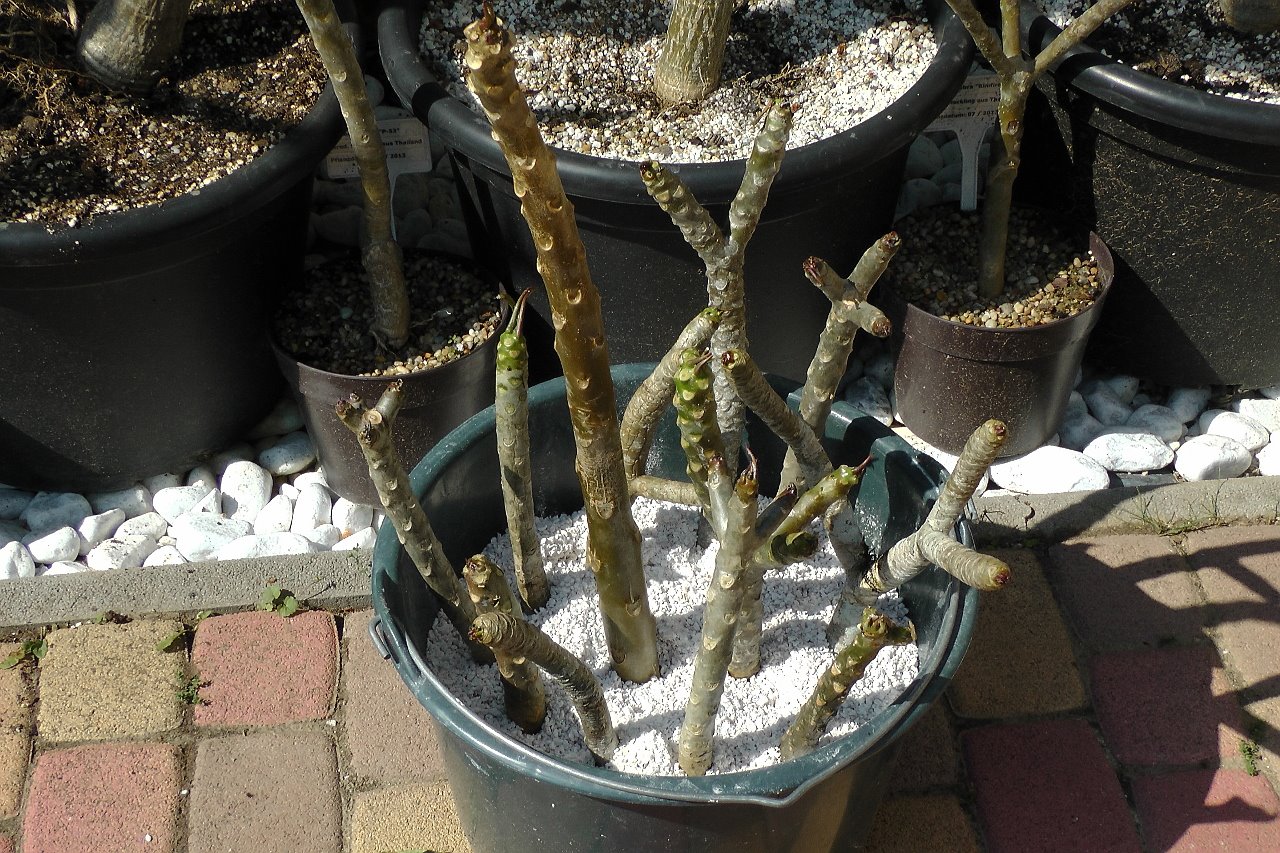
Other known rooting methods with good success
- Bagrooting
- Rooting directly in special soil
- Rooting in a small greenhouse climate
- Sealing the interface with wax
- Rooting in a plastic cup with special soil


